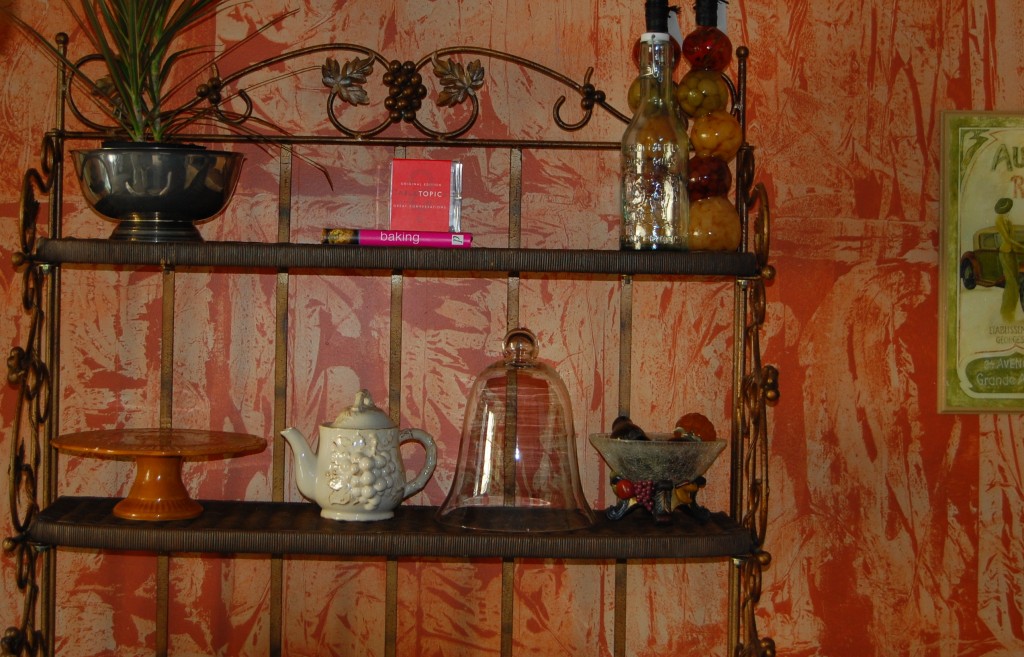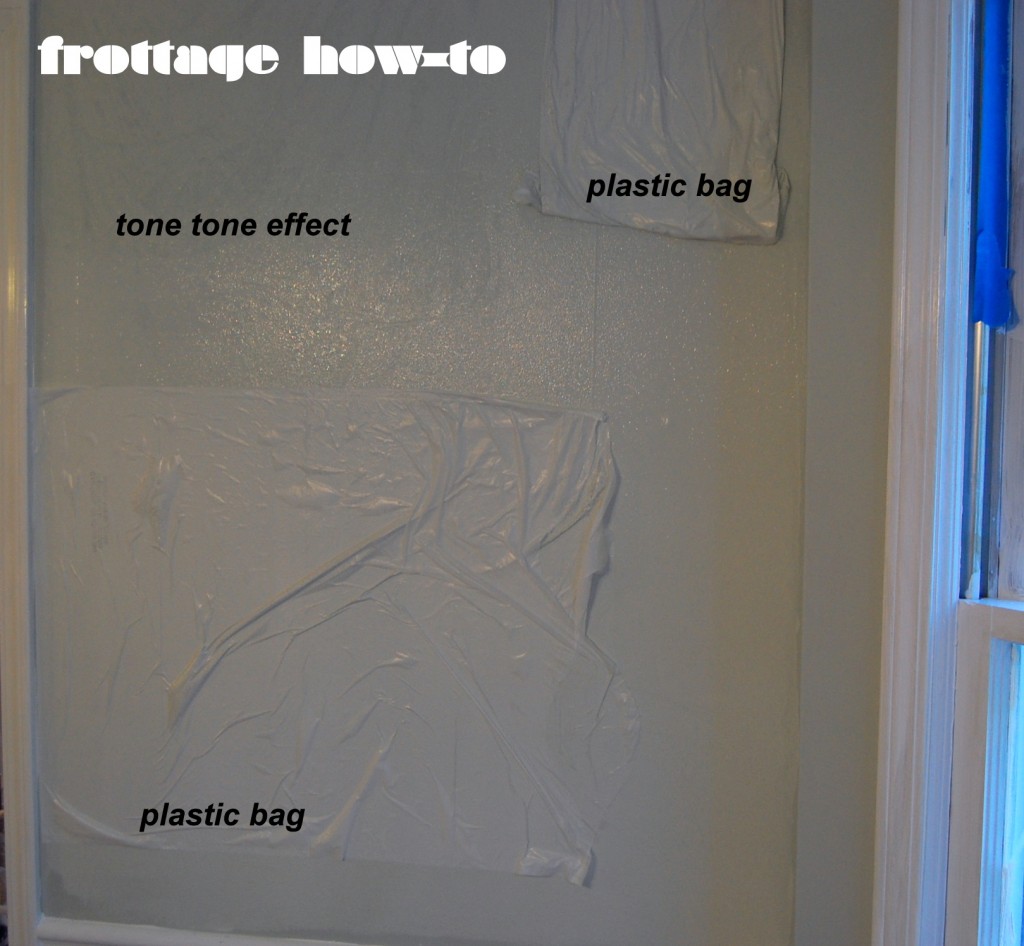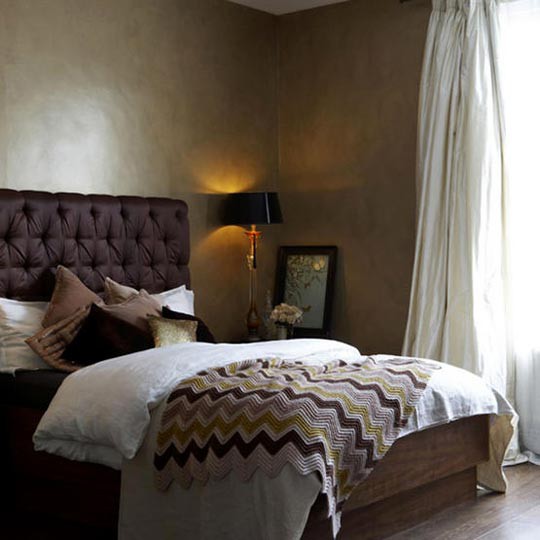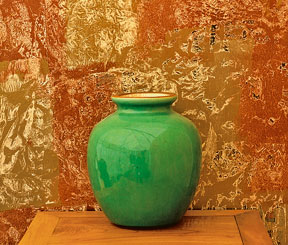I’ve received several questions about the walls in our old kitchen (pre-renovation). Not necessarily good questions. I think some were baffled by it. (Which is understandable -it’s been referred to as ‘expired ketchup‘). I tried out a wall treatment known as frottage (from the french word to rub). The treatment is done with paint and results in a unique, textured look. Overall, I really like the effect and I still maintain it can be a nice technique but I grew tired of the colors I’d used several years ago.

Actually, I even tried the technique out again in the new kitchen. The basic idea is to choose two colors to work with. Paint the wall with the base color. This color will show somewhat but not as much as the color you will use for the top layer. In the old kitchen, I painted the wall a basic beige color. The same color on the wall underneath the chair railing was used as the base for above the chair railing. In the new kitchen, I painted the walls with half-tint Benjamin Moore Gray Wisp as base coat.
After the base coat dried, I painted a second coat in a different color on the wall, working in small sections. Again, the first time I did this several years ago, my top coat was the rust, orangey color. Recently, I mixed more white into the BM Gray Wisp for a monochromatic scheme. While the top coat was still wet, I applied a plastic trash bag to the wall, and rubbed it to smooth it out on the wall. Once it was flush and smooth against the wall, I quickly peeled it away (like ripping off a Bandaid). That resulted in some paint being lifted from the wall randomly, revealing the base color underneath. It leaves the wall slightly textured.

Applying it with a large trash bag can also give a block pattern appearance to the wall too. This technique works well to hide imperfections with flawed walls or wall paper that has been painted over. It would be fun to experiment with different colors.

In the end, for our current kitchen, I ended up painting over the frottage technique with another coat of Gray Wisp and leaving the walls a solid color. But in the right space, I’d definitely use the technique again. That’s the good thing about it, if you tire of it, you can simply paint over it (unlike a plaster treatment I did in two bathrooms that must be scraped off).
What do you think of the look of frottage?
-J



I like the look, I can see why you would tire of the old colors, but it looked pretty interesting and is not as drastic as a solid wall of rusty orange.